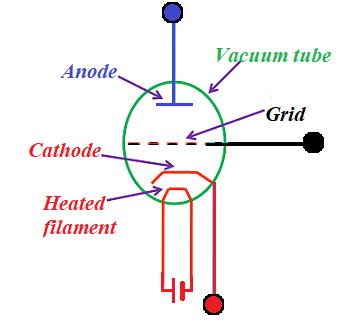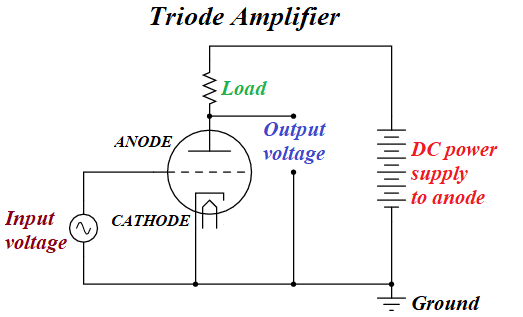Electronics: Triode
Triodes are another class of relatively simple electronic components that are present in practically all electronic devices.
The main purpose of a triode is to amplify the electric current in addition to rectifying it.
Placing a negatively charged grid between a source of an electron cloud (cathode) and a plate receiving electrons produced by this thermionic emission (anode) allows to regulate the flow of electrons from cathode to anode.
The greater negative charge of an electrostatic field of a grid is - the more electrons will be repelled back to cathode and will not reach anode.
The electrically neutral grid causes a triode to act as a diode since the grid is no longer repels electrons, so they are attracted and fly to anode without any resistance.
There is a direct correlation between the voltage of a grid relatively to cathode and the amperage of the current reaching the anode.
Below is a schematic representation of a vacuum tube triode with a heated filament separated from a cathode, so the battery which heats the filament does not interfere with current from cathode to anode.

The following schema represents the basic principle of amplifying a signal using a triode.

The DC power supply causes a flow of electrons from an electron cloud around cathode, caused by thermionic emission, to anode plate.
Input voltage is applied to a grid inside a triode, that affects the flow of electrons from cathode to anode.
Varying the base voltage of DC power supply, we can regulate the strength of the output voltage relatively to input voltage.
Output voltage changes synchronously with the input voltage with the same frequency but different amplitude. This enables amplifying the input signal.
Vacuum tube triodes are rarely used nowadays. Semiconductors and integrated circuits are the main technological base. Basic functionality of triodes is implemented in semiconductors called transistors. These will be discussed in a separate chapter of this course dedicated to semiconductors.


No comments:
Post a Comment